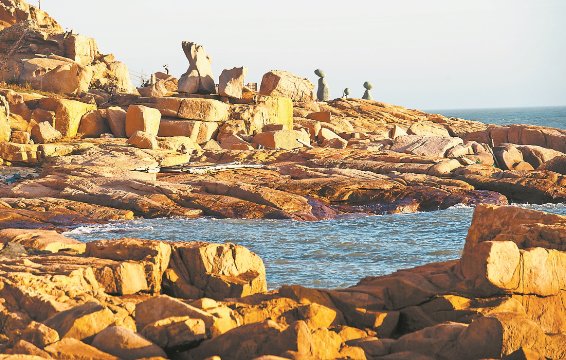
Pingtan Stone Houses: "Living Fossil" of Island Residence Culture
平潭石头厝:海岛居住文化的“活化石”

Strange rocks at 68 Nautical Mile Scenic spot in Aoqian Town, Pingtan (Photo by Zhang Yongding)
平潭澳前镇68海里景区的奇岩怪石(张永定 摄)
On the coast of the East China Sea, the wind and waves are surging, Pingtan Island is like Kirin leaping into the sea. On this island, stone is the most vivid and obvious element.
东海之滨,风起浪涌,平潭岛如麒麟跃然海上。在这座岛上,石头是最鲜明的元素。
Stones, which have been closely related to the lives of Pingtan people for thousands of years. Among them, the scattered stone houses by the mountain and beside the sea, are the most unique scenery.
石头,千百年来与平潭人民生活息息相关。其中,依山傍海、错落有致的石头厝是最别致的风景。
As we all know, the traditional Chinese residential buildings are mainly made by brick and wood, and groups of stone houses are very rare. However, Pingtan is one of the areas along the coast of China, which have the most well-preserved stone houses, wherever there are villages, there are stone houses.
众所周知,中国传统民居以砖、木建筑为主,成群的石头房子少见。而平潭是中国沿海石头厝成片保存最完整的地区之一,只要有村落的地方,就有石头厝。
The stone house embodies the survival wisdom of the island's ancestors for fighting with natural conditions, and carries the strong nostalgia of Pingtan people who are striving and making a living overseas. It is not only a unique residence with strong customs, but also a miniature of the regional culture and history of Pingtan Island, and is known as the "living fossil" of the island's residential culture.
石头厝凝聚着海岛先民战天斗地的生存智慧,承载着平潭儿女打拼世界的浓浓乡愁,不仅是风情浓郁的独特民居,也是平潭岛地域文化和历史的缩影,被誉为海岛居住文化的“活化石”。

